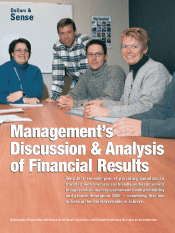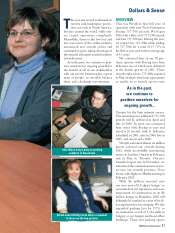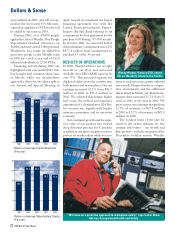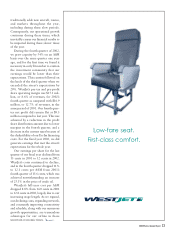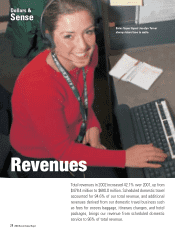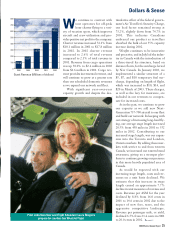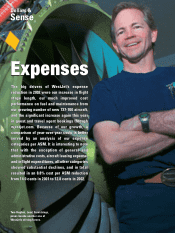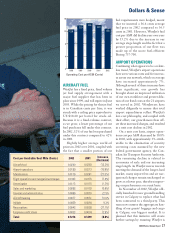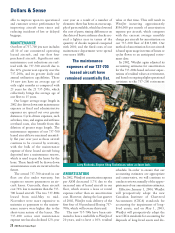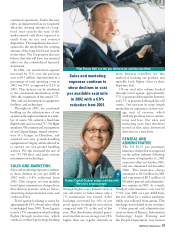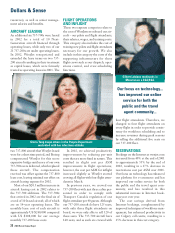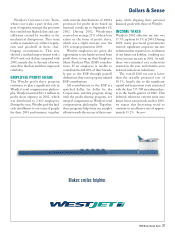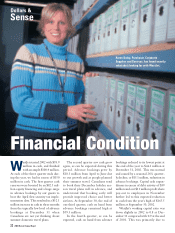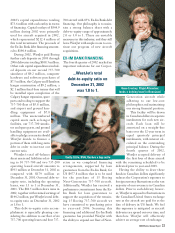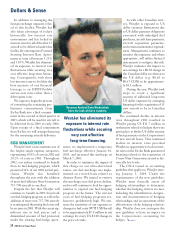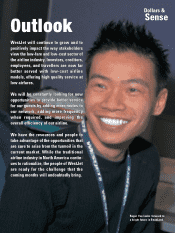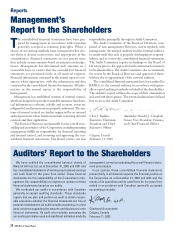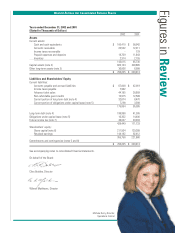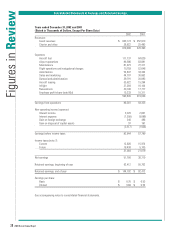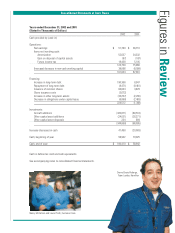Westjet 2002 Annual Report Download - page 29
Download and view the complete annual report
Please find page 29 of the 2002 Westjet annual report below. You can navigate through the pages in the report by either clicking on the pages listed below, or by using the keyword search tool below to find specific information within the annual report.
more business travellers use this
method of booking our product, and
typically book flights closer to their
departure date.
Of our total sales volume booked
through travel agents, approximately
57% is generated through the Internet
and 27% is generated through the call
centre. Our increase in stage length
means that we experience a lower aver-
age unit of revenue, which
similarly produces lower commis-
sions and fees. Our sales and
marketing costs have therefore
moved in that same downward
direction on a unit basis.
GENERAL AND
ADMINISTRATIVE
The US $1.25 per passenger
insurance charge that was imposed
on the airline industry following
the events of September 11, 2001
came into effect in October 2001,
and was eliminated in December
2002. This insurance charge
amounted to $1.9 million in 2001
and represented $8.5 million of
WestJet’s general and administra-
tive expense in 2002. As a result,
WestJet’s total insurance cost rose by
77.9% over 2001 on a per ASM basis,
but was offset by a similar surcharge
which was collected from guests. This
surcharge was included in our revenues.
Other general and administrative
costs are those of Finance, Information
Technology, Legal, Training and
the People Department (our human
Pilot Shawn Hall can tell you where to go and take you there.
continued operations. Under the new
rules, an impairment loss is recognized
when the carrying amount of a long-
lived asset exceeds the sum of the
undiscounted cash flows expected to
result from its use and eventual
disposition. The impairment loss is rec-
ognized to the extent that the carrying
amount of the long-lived asset exceeds
its fair value. The Corporation does not
believe that this will have any material
effect on the consolidated financial
statements.
In 2002, our amortization expense
increased by 53% over the previous
year to $53 million. Amortization as a
percentage of total operating costs in
2002 was 8.9% as opposed to 8.2% in
2001. This increase can be attributed
to the accelerated amortization of the
200s, the acquisition of the owned 737-
700s, and our investment in equipment,
facilities, and technology.
Throughout 2002, we continued
building on the infrastructure of our
operation through investment in a num-
ber of assets. We ordered a fixed-base
flight trainer and a second 737-700 flight
simulator. We commenced an expansion
of our Calgary hangar, started construc-
tion of a hangar in Hamilton, and
acquired our own ground-handling
equipment in Calgary, which allowed us
to operate our own ground handling
services. We also increased the size of
our 737-700 fleet, and made various
investments in technology.
SALES AND MARKETING
Sales and marketing expenses continue
to show declines in cost per ASM in
2002 with a 6.8% reduction from
2001. This category of costs includes
travel agent commissions, charges from
distribution systems such as Sabre,
advertising and promotional costs, and
credit card fees.
Travel agency bookings account for
approximately 38% of total sales, which
is unchanged from 2001. Travel agents
receive a 9% commission when booking
flights through westjet.com, which
results in a reduced percentage booking
Sales and marketing
expenses continue to
show declines in cost
per available seat mile
in 2002 with a 6.8%
reduction from 2001.
through higher-cost channels such as
our call centre or Sabre where only a
7% commission was earned. Sabre
bookings accounted for 16% of our
travel agency bookings by year-end as
compared with 5% at the end of last
year. This distribution channel gener-
ates fares that are on average over 20%
higher than our regular channels as
Trainer Crystal Graham enjoys working with
WestJet’s newest people.
2002 WestJet Annual Report 29



